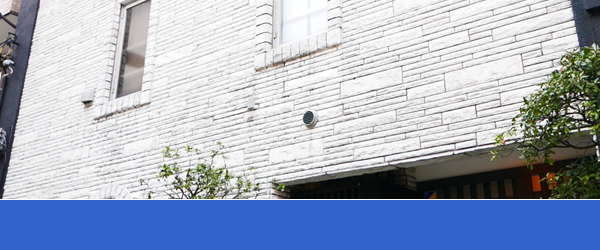Setsubun, a traditional Japanese festival, holds a special place in the hearts of the Japanese people, signifying the transition from winter to spring. Among the various Setsubun celebrations, the spring Setsubun, known as “risshun,” is considered the most significant. This festival, deeply rooted in tradition and history, serves as a farewell to winter and a welcoming of the warmer, blossoming season. One of the key customs that define Setsubun is the ritual of mamemaki, the act of throwing soybeans to purify and cleanse.
Setsubun, historically referring to the eve of any of the four seasonal transitions—risshun (February 4 or 5), rikka (May 5), risshū (August 7), and rittō (November 7) in the lunar calendar—holds a significant place in Japan’s cultural narrative. In contemporary times, Setsubun specifically denotes February 2, 3, or 4, the eve of the onset of spring (risshun). This date aligns with the anticipation of the New Year according to the ancient calendar.
The ritual of Setsubun extends beyond mere calendrical observations; it is a profound tradition embedded in the Japanese consciousness. The act of liberating oneself from negativity on this day symbolizes the commencement of a new phase, adorned with luck and good fortune.
While not a national holiday, Setsubun enjoys deep-rooted traditions, celebrated across the nation. The eve of each seasonal transition is aptly named Setsubun, translating to the “division between seasons of the year.” Due to Setsubun’s reference to the old lunisolar calendar (旧暦, kyūreki), slight variations in dates may occur in some years.
The Setsubun of spring, known as “risshun,” holds particular prominence in Japanese tradition, serving as the ceremonial farewell to winter. At its core, the ritual known as “mamemaki” (豆まき, literally “bean scattering”) takes center stage. Originating in the Muromachi period, around the mid-14th century, mamemaki is a purification rite aimed at cleansing the remnants of the past year and warding off demons in the new one.
In Japanese folklore, demons are believed to carry diseases and poverty, making the mamemaki ritual a symbolic gesture to ensure a fresh start unburdened by negative influences. The significance of Setsubun lies not only in its historical roots but also in its dynamic role as a conduit between ancient tradition and contemporary aspirations for a brighter future.

The intriguing link between soybeans and devils within the context of Setsubun unveils a captivating blend of language, superstition, and rituals in Japanese culture. In Japanese, soybeans are referred to as “mame” (豆), while the word for devil is “akuma” (悪魔), and eye is “me” (目). The expression “devil’s eye” is translated as “akuma no me” (悪魔の目).
The clever Japanese tendency to shorten words by using the first and last syllables of longer expressions comes into play. The contraction of “devil’s eye” results in “mame,” the same word used for soybeans. This linguistic play leads to the belief that warding off demons by throwing soybeans with the intention of hitting them in the eyes could dispel bad luck and attract good fortune (a common theme in Japanese superstitions based on wordplay).

This ritual is typically carried out by the head of the family or the most significant person in the setting where it takes place (such as a school or temple). It involves throwing soybeans while shouting:
“¡oni wa soto! ¡fuku wa uchi!” (鬼は外! 福は内!)
which translates to “Out with demons! In with good luck!” (Japanese customs often involve shouting in such cases, akin to the enthusiasm seen in matsuri celebrations).
While primarily a family celebration, numerous temples and shrines across Japan partake in Setsubun. Stores and supermarkets, especially konbini, create designated areas with bags of roasted soybeans, often including an oni mask as a gift.
In homes with children, the father often wears the mask and performs the ritual. Some children find it amusing, while others may be frightened.
In schools, it’s the teachers who take on the role of oni, receiving a shower of soybeans from the students. Following this ritual, it’s customary to eat some soybeans – as many as one’s age plus one for the new year to ward off catching a cold.

Step into the world of Ehōmaki, where sushi becomes a vessel for good fortune and directional symbolism. As we explore the Ehōmaki phenomenon, discover the secrets behind this auspicious roll and the ritual that accompanies its consumption. Get ready to savor not just sushi but a slice of Japanese folklore that adds a flavorful twist to the celebration of Setsubun
Origins:
The tradition of consuming ehōmaki during Setsubun is a captivating blend of culinary and cultural elements. It is a ritual where individuals enjoy maki sushi while facing the “lucky direction” known as Ehō (恵方), which changes each year.
Significance of the Name:
The term “ehōmaki” (恵方巻き) is a clever play on words, combining “Ehō” and “maki sushi.” The ritual involves devouring the entire maki sushi in one go, without speaking, while facing the auspicious direction. This practice aims to ensure the preservation of good luck throughout the year.
Choosing the Lucky Direction:
The orientation for ehōmaki consumption is determined by the Chinese zodiac sign for the upcoming year. Following an age-old tradition, the lucky direction is associated with the last digit of the Western calendar year, creating a cyclical pattern over five years.
- Years ending in 0 or 5: Look West-Southwest
- Years ending in 1, 3, 6, or 8: Look South-Southeast
- Years ending in 2 or 7: Look North-Northwest
- Years ending in 4 or 9: Look East-Northeast
This practice reflects a profound blend of Japanese and Chinese cultural elements, creating a unique and dynamic tradition.
Ingredients and Symbolism:
The ehōmaki recipe is curated with care, incorporating seven ingredients that symbolize the Shichifukujin, the seven gods of fortune:
- Cucumber: Representing longevity and happiness.
- Eel: Symbolizing prosperity and good fortune.
- Shiitake Mushrooms: Associated with longevity and protection.
- Carrot: Signifying good health and vitality.
- Datemaki (Japanese Sweet Omelet): Representing celebration and joy.
- Tofu: Symbolizing purity and good fortune.
- Pumpkin (preferably kanpyō type): Representing abundance and prosperity.
This selection of ingredients not only contributes to the delightful flavor of ehōmaki but also holds deep cultural significance, aligning with the Japanese reverence for symbols of luck and fortune.
Modern Resurgence:
The ehōmaki tradition, despite falling into disuse, experienced a revival in 1973 when nori producers in Osaka launched a successful promotional campaign. In 1977, this modern tradition was introduced as a marketing strategy to boost nori sales during a period of low demand.
Today, ehōmaki has transcended its regional roots and become a widespread tradition across Japan, embodying the cultural fusion of culinary delight and auspicious beliefs.

While Setsubun’s familiar rituals, such as throwing soybeans and devouring lucky maki sushi, gain increasing popularity each year, there’s a lesser-known tradition that involves a surprising culinary element – sardines.
In Japan, it is believed that demons detest the smell of sardines. This unique tradition traces its roots back to the ancient practice of placing sardine heads impaled on holly branches at the entrance of homes. These peculiar talismans, known as “Hīragi Iwashi” (柊鰯), can still be found in rural settings or establishments with a traditional ambiance.

The term “Hīragi Iwashi” combines “hīragi” (柊, holly) and “iwashi” (鰯, sardine). In antiquity, it was believed that demons were frightened by the sight of sardine eyes peering from the sharp tips of holly leaves. Thus, by keeping demons at bay, households could ward off misfortune at the beginning of the year.
In addition to soybeans and oni masks, another iconic image associated with Setsubun is the sight of burned sardine heads hanging on holly branches. This ritual, known as oni-yarai or tsuina, involves the symbolic hunting of malevolent spirits. The practice dates back to the Nara period (710-794), with the belief that devils could be expelled through the scent produced by burning dried sardine heads, the smoke from burning wood, and the sound of drums.
Although this tradition has somewhat fallen out of favor, some Japanese households still hang dried sardine heads on holly branches at their entrances during the Setsubun evening. The objective is clear: to prevent malevolent spirits from entering their homes.
This ornament, called Hiiragi Iwashi (柊鰯), is now rare in cities but remains relatively common in rural areas. Depending on the regions you visit during your trip to Japan in Setsubun, you might have the chance to witness this unique blend of maritime tradition and protective symbolism. As the sardines dangle and holly leaves sway, it’s a testament to the enduring richness and diversity of Setsubun customs across the Japanese landscape.

As Setsubun unfolds, Tokyo transforms into a vibrant canvas of traditional rituals and lively festivities. Here’s a guide on where to immerse yourself in the spirited atmosphere of Setsubun in the heart of Japan’s bustling capital:
- Senso-ji Temple in Asakusa:
Embrace the historical charm of Senso-ji, Tokyo’s oldest temple, where Setsubun is celebrated with fervor. Join the crowd as priests and celebrities participate in the bean-throwing ceremony, and soak in the lively ambiance amidst the iconic Thunder Gate.
- Zojo-ji Temple in Minato:
Experience a unique blend of traditional and modern celebrations at Zojo-ji Temple, situated against the backdrop of Tokyo Tower. The ceremonial bean-throwing, accompanied by prayers for health and prosperity, draws locals and visitors alike.
- Kanda Myojin Shrine in Chiyoda:
Head to Kanda Myojin Shrine for a Setsubun celebration that seamlessly intertwines tradition with pop culture. Marvel at the dynamic lion dance, partake in the lively bean-throwing event, and witness the ceremonial burning of a large oni mask.
- Tokyo Disneyland and Tokyo DisneySea:
Even the magical world of Disney embraces Setsubun! Join the festivities at both Tokyo Disneyland and Tokyo DisneySea, where special events, character appearances, and themed decorations add an enchanting touch to the traditional celebration.
- Local Shrines and Neighborhood Events:
Explore the charm of Tokyo’s local neighborhoods by visiting smaller shrines and community events. Many local shrines host Setsubun celebrations with bean-throwing ceremonies, traditional dances, and family-friendly activities.

Delve into the local flavor of Setsubun at Nezu Tokyo Shrine , a hidden gem favored by locals and even recommended by our staff (well, for me). Experience the warmth of community celebrations, witness captivating rituals, and join in the joyous bean-throwing festivities. This off-the-beaten-path shrine provides an authentic and intimate Setsubun experience, making it a must-visit during your Tokyo exploration.
- Shopping Streets and Department Stores:
Tokyo’s bustling shopping districts and department stores also join in the Setsubun celebrations. Explore popular areas like Ginza and Shibuya, where you might encounter special events, decorations, and even themed merchandise.
- Hotels and Cultural Centers:
Some hotels and cultural centers in Tokyo organize Setsubun-themed events for both guests and locals. Check out schedules and offerings for a chance to participate in traditional rituals, enjoy special meals, and immerse yourself in the festive spirit.
- Local Restaurants and Cafes:
Discover Tokyo’s culinary scene during Setsubun by visiting restaurants and cafes that incorporate traditional elements into their menus. Some establishments offer Setsubun-themed dishes and events, providing a unique culinary experience.
As Setsubun continues to evolve, contemporary celebrations have introduced a delightful array of items alongside the customary soybeans, turning the event into a vibrant extravaganza. In addition to the traditional act of throwing soybeans, participants now engage in a playful mix of activities that include tossing sweets like candies, and even unexpected items such as tangerines (yes, while the idea may sound innocuous, the cautionary note arises from personal experience – a direct hit by a tangerine may cause unintended harm! Attendees are advised to be alert and nimble as these citrus projectiles fly through the air.
Setsubun’s traditional bean-throwing has transformed into a lively, multi-sensory celebration. This dynamic event breathes new life into the cherished Japanese tradition, captivating participants with its unpredictability and vibrant spirit.








